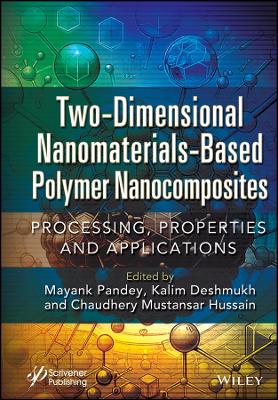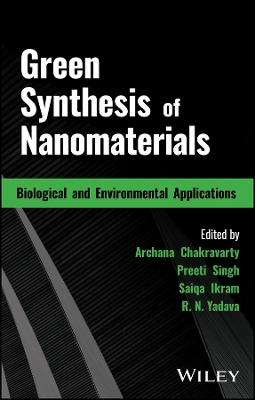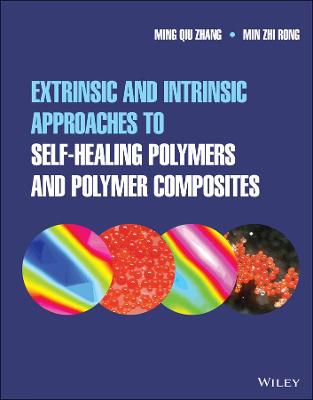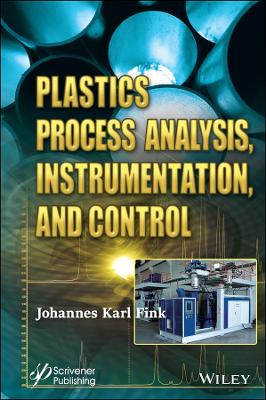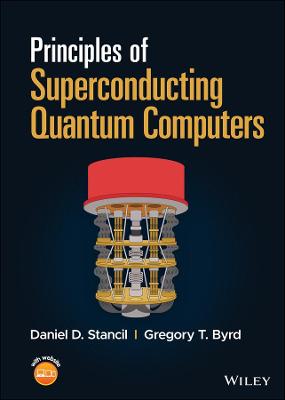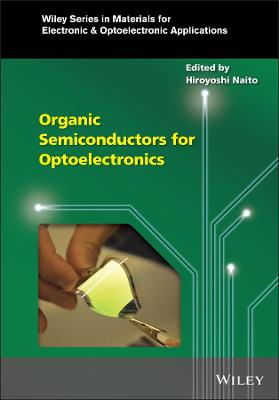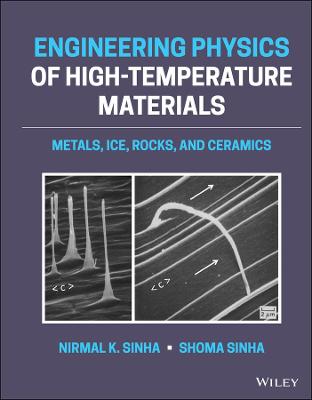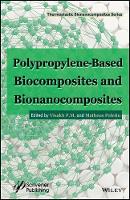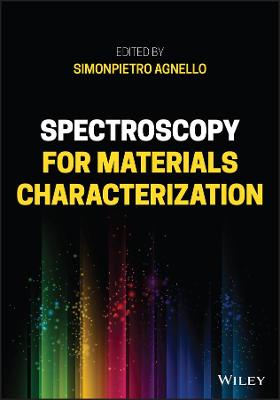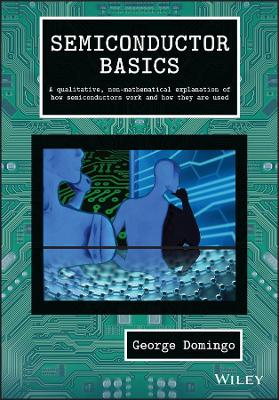Polymers for Light-emitting Devices and Displays
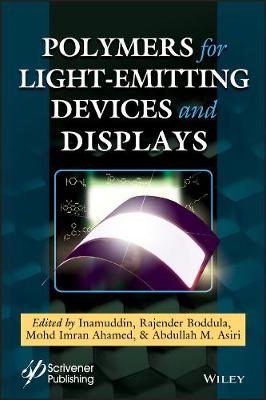 -15%
portes grátis
-15%
portes grátis
Polymers for Light-emitting Devices and Displays
Ahamed, Mohd Imran; Inamuddin; Boddula, Rajender; Asiri, Abdullah M.
John Wiley & Sons Inc
06/2020
288
Dura
Inglês
9781119654605
15 a 20 dias
580
1 Applications of Polymer Light-Emitting Devices and Displays 1
D. Prakash Babu, S. Naresh Kumar, N. Suresh Kumar, K. Chandra Babu Naidu and D. Baba Basha
1.1 Introduction 1
1.2 Background 2
1.3 The Mechanism of Light Emission 3
1.4 Widely Used Polymers in PLED Applications 4
1.4.1 Polyfluorene-Based Luminescent Polymers 4
1.4.2 Polyfluorene Homo-Polymers 5
1.4.3 Polyfluorene Alternating Copolymers 5
1.4.4 Derivatives of PPV 6
1.4.5 Soluble Precursors of PPV 6
1.4.6 Derivatives of PPV for Solution-Processing 6
1.4.7 Polyphenylenes 7
1.5 Parameters to be Considered for Display Applications 7
1.5.1 Color Purity and Brightness 7
1.5.2 Light Conversion Efficiency 8
1.5.3 Color Stability 8
1.6 Applications in Large and Small Area Devices 9
1.6.1 Displays 9
1.6.1.1 Matrix and Small Segmented Displays, ?25 cm2 9
1.6.2 Thin and Flat Light Sources 9
1.6.3 Cloth-Type PLEDs 10
1.6.4 PLEDs in Wearable Electronics 11
1.7 Conclusion 11
References 11
2 Polymer Light-Emitting Devices by Solution Processing 15
Mariya Aleksandrova
2.1 Introduction 16
2.1.1 Materials, Design, Main Parameters, and Characteristics of PLEDs 17
2.1.2 Main Problems at PLEDs and How the Solution Processes Can Affect Them 18
2.1.3 Aim of This Chapter 20
2.2 Materials for Fabrication of PLEDs and Their Performance at Solution Processing 20
2.2.1 New Polymers for Light-Emissive Layers and for Supplementary HTL and ETL 20
2.2.2 ITO-Free Electrodes-Solution Processed and Polymer Alternatives to the Transparent Conductive Oxides 30
2.3 Specific Phenomena at PLED-Energy Transfers, Traps, Excitons Formation, and Color Tuning 39
2.4 Conclusions 45
References 46
3 DFT Computational Modeling and Design of New Cyclopentadithiophene (CPDT) Derivatives for Highly Efficient Blue Emitters in OLEDs 51
Rania Zaier, Said Hajaji, Masatoshi Kozaki and Sahbi Ayachi
3.1 Introduction 52
3.2 Computational Methods 53
3.3 Molecular Geometry 54
3.4 Frontier Molecular Orbitals 56
3.5 Molecular Electrostatic Potential Maps 59
3.6 Optical Absorption and Emission Properties 59
3.6.1 UV-Vis-NIR Optical Absorption Properties 59
3.6.2 Emission Properties 63
3.7 ICT Properties 64
3.8 OLEDs Modulation 68
3.9 Conclusion 70
References 70
4 Conjugated Polymer Light-Emitting Diodes 77
Sapana Jadoun and Ufana Riaz
4.1 Introduction 77
4.2 History, Classification, and Characteristics of Polymer OLED Material 79
4.3 Polymer OLED Device Construction and Working 81
4.4 Blue Light-Emitting Diodes 82
4.5 Green Light-Emitting Diodes 83
4.6 Red Light-Emitting Diodes 84
4.7 Multicolor Light-Emitting Diodes 85
4.8 Advantages of OLEDs over Other Liquid Crystal Display 85
4.9 Applications of OLEDs 87
4.10 Challenges and Future Possibilities 87
4.11 Conclusion 88
References 89
5 Application of Electrospun Materials in LEDs 99
Subhash B. Kondawar, Mahelaqua A. Haque and Chaitali N. Pangul
5.1 Introduction 99
5.2 Electrospun Nanofibers Technology 101
5.3 Electrospun Materials for LEDs 104
5.3.1 Metal Oxide Semiconducting Electrospun Nanofibers 105
5.3.2 Perovskite Electrospun Nanofibers 108
5.3.3 Rare Earth Ion Doped Electrospun Nanofibers 113
5.3.4 Electrospun Coordination Polymeric Nanofibers 118
5.4 Conclusions 119
References 120
6 Luminescent Polymer Light-Emitting Devices and Displays 125
Nayan Ranjan Singha, Pijush Kanti Chattopadhyay, Mousumi Deb, Mrinmoy Karmakar, Manas Mahapatra, Madhushree Mitra and Arnab Dutta
Abbreviation 126
6.1 Introduction 126
6.2 Chronological Development 128
6.3 Basic Principles Behind Luminescence of Polymers 144
6.4 Classification of Polymer Light-Emitting Diode 147
6.4.1 Classification Based on the Type of Components 147
6.4.2 Classification Based on the Device Architecture 147
6.4.3 Classification Based on the Charge Carriers 149
6.4.3.1 Single Carrier Device 149
6.4.3.2 Bipolar Devices 150
6.4.4 Classification Based on the Color of Emission 150
6.4.4.1 Green and Blue Color Emitting PLEDs 150
6.4.4.2 Red Color Emitting PLED 151
6.4.4.3 White Color Emitting PLED 152
6.5 Dependence of Various Performance Parameters on Structural Factors 153
6.5.1 Brightness 153
6.5.2 Efficiencies 153
6.5.2.1 Characteristics of EML 153
6.5.2.2 Characteristics of EIL/ETL 160
6.5.2.3 Characteristics of HIL/HTL 162
6.5.2.4 Characteristics of HBL and EBL 163
6.5.2.5 Characteristics of Cathode 164
6.5.2.6 Characteristics of Anode 165
6.6 Life Time and Stability 166
6.7 Recent Developments, Challenges, and Constraints 166
6.8 Conclusions 169
References 170
7 Polymer Liquid Crystal Devices and Displays 177
Nimra Shakeel, Mohd Imran Ahamed and Naushad Anwar
7.1 Introduction 178
7.2 History and Progress 182
7.3 Polymer Liquid Crystal: An Overview 183
7.4 Applications of PLCs 185
7.4.1 PLCs as Laser Sources 185
7.4.2 PLCs as Dynamic Lenses 186
7.4.3 PLCs as Biosensors 187
7.4.4 PLCs as Actuator Devices 188
7.5 Conclusions 189
References 189
8 Hybrid Inorganic-Organic White Light Emitting Diodes 197
Mauro Mosca, Roberto Macaluso and Isodiana Crupi
8.1 Introduction 197
8.2 Hybrid Devices and Other Ambiguities 200
8.3 Necessity of a Host Matrix 204
8.4 Materials for Hybrid LEDs 205
8.4.1 Luminescent Polymers 205
8.4.2 Molecular Luminescent Dyes 207
8.4.3 Biomaterials and Biomolecules 223
8.4.4 Metal-Organic Frameworks 229
8.4.5 Carbon Dots 240
8.5 Color Tuning and Rendering 243
8.6 Stability 245
8.7 Conclusions 251
References 251
Index 263
1 Applications of Polymer Light-Emitting Devices and Displays 1
D. Prakash Babu, S. Naresh Kumar, N. Suresh Kumar, K. Chandra Babu Naidu and D. Baba Basha
1.1 Introduction 1
1.2 Background 2
1.3 The Mechanism of Light Emission 3
1.4 Widely Used Polymers in PLED Applications 4
1.4.1 Polyfluorene-Based Luminescent Polymers 4
1.4.2 Polyfluorene Homo-Polymers 5
1.4.3 Polyfluorene Alternating Copolymers 5
1.4.4 Derivatives of PPV 6
1.4.5 Soluble Precursors of PPV 6
1.4.6 Derivatives of PPV for Solution-Processing 6
1.4.7 Polyphenylenes 7
1.5 Parameters to be Considered for Display Applications 7
1.5.1 Color Purity and Brightness 7
1.5.2 Light Conversion Efficiency 8
1.5.3 Color Stability 8
1.6 Applications in Large and Small Area Devices 9
1.6.1 Displays 9
1.6.1.1 Matrix and Small Segmented Displays, ?25 cm2 9
1.6.2 Thin and Flat Light Sources 9
1.6.3 Cloth-Type PLEDs 10
1.6.4 PLEDs in Wearable Electronics 11
1.7 Conclusion 11
References 11
2 Polymer Light-Emitting Devices by Solution Processing 15
Mariya Aleksandrova
2.1 Introduction 16
2.1.1 Materials, Design, Main Parameters, and Characteristics of PLEDs 17
2.1.2 Main Problems at PLEDs and How the Solution Processes Can Affect Them 18
2.1.3 Aim of This Chapter 20
2.2 Materials for Fabrication of PLEDs and Their Performance at Solution Processing 20
2.2.1 New Polymers for Light-Emissive Layers and for Supplementary HTL and ETL 20
2.2.2 ITO-Free Electrodes-Solution Processed and Polymer Alternatives to the Transparent Conductive Oxides 30
2.3 Specific Phenomena at PLED-Energy Transfers, Traps, Excitons Formation, and Color Tuning 39
2.4 Conclusions 45
References 46
3 DFT Computational Modeling and Design of New Cyclopentadithiophene (CPDT) Derivatives for Highly Efficient Blue Emitters in OLEDs 51
Rania Zaier, Said Hajaji, Masatoshi Kozaki and Sahbi Ayachi
3.1 Introduction 52
3.2 Computational Methods 53
3.3 Molecular Geometry 54
3.4 Frontier Molecular Orbitals 56
3.5 Molecular Electrostatic Potential Maps 59
3.6 Optical Absorption and Emission Properties 59
3.6.1 UV-Vis-NIR Optical Absorption Properties 59
3.6.2 Emission Properties 63
3.7 ICT Properties 64
3.8 OLEDs Modulation 68
3.9 Conclusion 70
References 70
4 Conjugated Polymer Light-Emitting Diodes 77
Sapana Jadoun and Ufana Riaz
4.1 Introduction 77
4.2 History, Classification, and Characteristics of Polymer OLED Material 79
4.3 Polymer OLED Device Construction and Working 81
4.4 Blue Light-Emitting Diodes 82
4.5 Green Light-Emitting Diodes 83
4.6 Red Light-Emitting Diodes 84
4.7 Multicolor Light-Emitting Diodes 85
4.8 Advantages of OLEDs over Other Liquid Crystal Display 85
4.9 Applications of OLEDs 87
4.10 Challenges and Future Possibilities 87
4.11 Conclusion 88
References 89
5 Application of Electrospun Materials in LEDs 99
Subhash B. Kondawar, Mahelaqua A. Haque and Chaitali N. Pangul
5.1 Introduction 99
5.2 Electrospun Nanofibers Technology 101
5.3 Electrospun Materials for LEDs 104
5.3.1 Metal Oxide Semiconducting Electrospun Nanofibers 105
5.3.2 Perovskite Electrospun Nanofibers 108
5.3.3 Rare Earth Ion Doped Electrospun Nanofibers 113
5.3.4 Electrospun Coordination Polymeric Nanofibers 118
5.4 Conclusions 119
References 120
6 Luminescent Polymer Light-Emitting Devices and Displays 125
Nayan Ranjan Singha, Pijush Kanti Chattopadhyay, Mousumi Deb, Mrinmoy Karmakar, Manas Mahapatra, Madhushree Mitra and Arnab Dutta
Abbreviation 126
6.1 Introduction 126
6.2 Chronological Development 128
6.3 Basic Principles Behind Luminescence of Polymers 144
6.4 Classification of Polymer Light-Emitting Diode 147
6.4.1 Classification Based on the Type of Components 147
6.4.2 Classification Based on the Device Architecture 147
6.4.3 Classification Based on the Charge Carriers 149
6.4.3.1 Single Carrier Device 149
6.4.3.2 Bipolar Devices 150
6.4.4 Classification Based on the Color of Emission 150
6.4.4.1 Green and Blue Color Emitting PLEDs 150
6.4.4.2 Red Color Emitting PLED 151
6.4.4.3 White Color Emitting PLED 152
6.5 Dependence of Various Performance Parameters on Structural Factors 153
6.5.1 Brightness 153
6.5.2 Efficiencies 153
6.5.2.1 Characteristics of EML 153
6.5.2.2 Characteristics of EIL/ETL 160
6.5.2.3 Characteristics of HIL/HTL 162
6.5.2.4 Characteristics of HBL and EBL 163
6.5.2.5 Characteristics of Cathode 164
6.5.2.6 Characteristics of Anode 165
6.6 Life Time and Stability 166
6.7 Recent Developments, Challenges, and Constraints 166
6.8 Conclusions 169
References 170
7 Polymer Liquid Crystal Devices and Displays 177
Nimra Shakeel, Mohd Imran Ahamed and Naushad Anwar
7.1 Introduction 178
7.2 History and Progress 182
7.3 Polymer Liquid Crystal: An Overview 183
7.4 Applications of PLCs 185
7.4.1 PLCs as Laser Sources 185
7.4.2 PLCs as Dynamic Lenses 186
7.4.3 PLCs as Biosensors 187
7.4.4 PLCs as Actuator Devices 188
7.5 Conclusions 189
References 189
8 Hybrid Inorganic-Organic White Light Emitting Diodes 197
Mauro Mosca, Roberto Macaluso and Isodiana Crupi
8.1 Introduction 197
8.2 Hybrid Devices and Other Ambiguities 200
8.3 Necessity of a Host Matrix 204
8.4 Materials for Hybrid LEDs 205
8.4.1 Luminescent Polymers 205
8.4.2 Molecular Luminescent Dyes 207
8.4.3 Biomaterials and Biomolecules 223
8.4.4 Metal-Organic Frameworks 229
8.4.5 Carbon Dots 240
8.5 Color Tuning and Rendering 243
8.6 Stability 245
8.7 Conclusions 251
References 251
Index 263



